June 2009

Come Over and Help Us
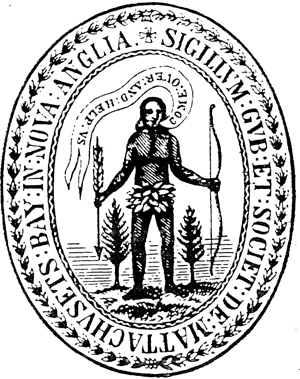 Noam Chomsky on early American branding and a history of torture in the USA:
Noam Chomsky on early American branding and a history of torture in the USA:
“The inspirational phrase ‘city on a hill’ was coined by John Winthrop in 1630, borrowing from the Gospels, and outlining the glorious future of a new nation ‘ordained by God.’ One year earlier his Massachusetts Bay Colony created its Great Seal. It depicted an Indian with a scroll coming out of his mouth. On that scroll are the words ‘Come over and help us.’ The British colonists were thus pictured as benevolent humanists, responding to the pleas of the miserable natives to be rescued from their bitter pagan fate.
The Great Seal is, in fact, a graphic representation of ‘the idea of America,’ from its birth.… The Great Seal was an early proclamation of ‘humanitarian intervention,’ to use the currently fashionable phrase. As has commonly been the case since, the ‘humanitarian intervention’ led to a catastrophe for the alleged beneficiaries. The first Secretary of War, General Henry Knox, described ‘the utter extirpation of all the Indians in most populous parts of the Union’ by means ‘more destructive to the Indian natives than the conduct of the conquerors of Mexico and Peru.’”
 “Books of Hope partnered with the South African Depression and Anxiety Group, to design and produce interactive, multilingual Speaking Books that can be seen, read, heard and understood by the reader regardless of their reading ability.
“Books of Hope partnered with the South African Depression and Anxiety Group, to design and produce interactive, multilingual Speaking Books that can be seen, read, heard and understood by the reader regardless of their reading ability.The Speaking Book combines the latest sound chip technology featuring a sound track read by well-known local celebrities in the local language, with a durable laminated hard backed book, to take the reader on a step-by-step guide to wellness. Books of Hope has successfully created an effective means to present complex health care issues by adapting to the culture, skills and needs of communities while encouraging them to build self confidence with a simple action plan.”
See also Sandy K's extraordinary and generous 2006 response (PDF) to the Memefest social communication contest and this nice long rant, Awards Madness!, from Jason Grant of Inkahoots.
Neo Gardenism
At the intersection of urbanism, DIY, food justice and sustainable agriculture, a crop of artists are making open source gardens and sharing instructions on the web and beyond.
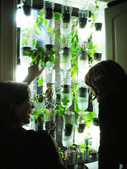 Britta Riley and Rebecca Bray build hydroponic Window Farms from recycled materials. The farms are specifically designed with New York City apartments in mind, and the website invites window gardeners to share photos, plans, designs and information.
Britta Riley and Rebecca Bray build hydroponic Window Farms from recycled materials. The farms are specifically designed with New York City apartments in mind, and the website invites window gardeners to share photos, plans, designs and information.
Edible Estates is a project to convert the classic American front lawn into a productive vegetable garden. Initiated by architect and artist Fritz Haeg on Independence Day, 2005, several prototype gardens were created in different cities across the United States, with instructions and documentation of the prototype gardens posted to the site. 2009 sites have not been announced, but the group is ideally looking for “A monotonous housing development of identical homes... where the interruption of the endless lawn would be dramatic and controversial.”
The Future Farmers’ Victory Gardens project is fought on two fronts: to deliver urban garden kits to urban farmers across San Francisco, and to ultimately develop and maintain a portion of the original Victory Garden space in San Francisco’s Golden Gate Park.
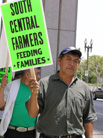 The Garden is a feature-length documentary film about a 14-acre community garden in South Central Los Angeles that emerged in the wake of the 1992 LA riots. The film chronicles the origins of the plot and the South Central Farmers struggle to prevent it from being demolished.
The Garden is a feature-length documentary film about a 14-acre community garden in South Central Los Angeles that emerged in the wake of the 1992 LA riots. The film chronicles the origins of the plot and the South Central Farmers struggle to prevent it from being demolished.
On the more underground tip, Guerilla Gardening is illicit, nocturnal gardening in a space not your own. guerrillagardening.org lists projects, mostly in London, each with a description, location, photos, and budget. The site includes tips for making your own.

Seed bombing is packing seeds in compressed soil and throwing it into inhospitable or hard to reach places. Artist Liz Christy was the first to use the term in 1973 when she fought urban decay by tossing seed grenades full of sunflower seeds into abandoned New York City lots. Here’s a scan of her original instruction sheet. Christy also co-founded the first community garden in New York City.
 Moss graffiti is also good for damp, urban corners. Anna Garforth has done some beautiful work here. Here’s how to make your own.
Moss graffiti is also good for damp, urban corners. Anna Garforth has done some beautiful work here. Here’s how to make your own.
And onto Gardening 2.0: Landshare is a UK website matching people who want to grown their own food with homeowners with underused space. The site also hosts an active forum for sharing tips and answering questions.
And with your veggies in hand, VeggieTrader is a website for trade, buy or sell homegrown produce.
I’m sure there are many more sites and projects, too. Between the recession and growing concern about industrial food systems, there seems to be something of a renaissance going on here.
Typographic Diplomacy
 AFP reports that the President of Taiwan today suggested that Taiwan adopt the simplified character set used in mainland China. The choice of script is clear political signal to Beijing towards reconciliation. The pro-Independence party is none too pleased. The Taiwanese-government funded Central News Agency is less alarmist, reporting that the President really encouraged learning simplified characters along side traditional characters.
AFP reports that the President of Taiwan today suggested that Taiwan adopt the simplified character set used in mainland China. The choice of script is clear political signal to Beijing towards reconciliation. The pro-Independence party is none too pleased. The Taiwanese-government funded Central News Agency is less alarmist, reporting that the President really encouraged learning simplified characters along side traditional characters.
In last summer’s article on Typography and Nationalism about countries switching scripts, I included this bit about the simplified script:
Chinese script reform has its roots in the 19th century, but Mao Zedong gave it the force of law. (Mao, a calligrapher himself, must have been keenly aware of the power of type.) A month after taking power in 1949, the Communist Party established the Language Reform Committee to simplify written Chinese. The move was intended to promote literacy and unify the nation, but it also worked to crush the many local languages within China’s borders.
The Nationalist-led government of Taiwan, however, never adopted the simplified characters preferring instead to continue using the traditional script. The choice of type has since marked a key cultural wedge between Taiwan and China.
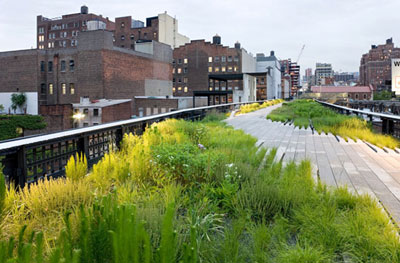
Placeholder
From wikipedia:
The art students who created the [Goddess of Democracy] statue wrote a declaration that said in part:
“At this grim moment, what we need most is to remain calm and united in a single purpose. We need a powerful cementing force to strengthen our resolve: That is the Goddess of Democracy. Democracy… You are the symbol of every student in the Square, of the hearts of millions of people.… Today, here in the People’s Square, the people’s Goddess stands tall and announces to the whole world: A consciousness of democracy has awakened among the Chinese people! The new era has begun! …
The statue of the Goddess of Democracy is made of plaster, and of course cannot stand here forever. But as the symbol of the people’s hearts, she is divine and inviolate. Let those who would sully her beware: the people will not permit this! …
On the day when real democracy and freedom come to China, we must erect another Goddess of Democracy here in the Square, monumental, towering, and permanent. We have strong faith that that day will come at last. We have still another hope: Chinese people, arise! Erect the statue of the Goddess of Democracy in your millions of hearts! Long live the people! Long live freedom! Long live democracy!”
The document was signed by the eight art academies that sponsored the creation of the statue: The Central Academies of Fine Arts, Arts and Crafts, Drama, and Music; the Beijing Film Academy; the Beijing Dance Academy; the Academy of Chines Local Stage Arts; and the Academy of Traditional Music.
The entire statement was written on a long banner placed near the statue, and was read in its entirety by a female student “with a good Mandarin accent” from the Broadcasting Academy.
20 Years On
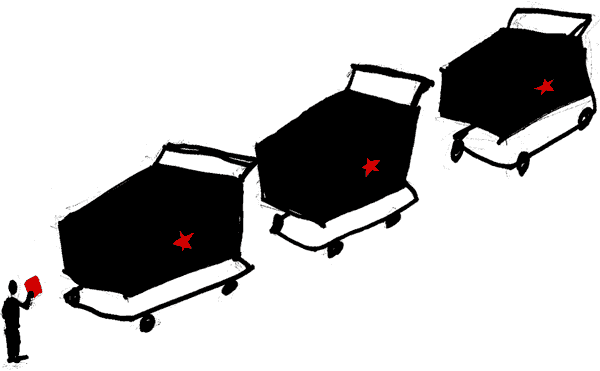
Mapping Power
An article I wrote is out now in the Design Issues column of the May/June 2009 Communication Arts. It draws on the material I presented at Conflux in September 2008.
Mapping Power
Using design to get where we want to go
What is power? It’s an abstract dynamic, an engine behind the visible world. Power can be found in relationships, in the flow of resources or information, in signs, symbols and ideas or built into the environment. There’s no doubt that visual media has the power to influence an audience, but visual media can also be used to visualize power itself. Visualizing power is a way of interpreting and understanding it. And this understanding can become a basis for challenging it. Design can be used to describe and locate power, to pressure those who hold power, and ultimately to facilitate and generate power by bringing people together.
Più design può
 Nearly a year ago, SocialDesignZine (SDZ) published a blog item about design and the city that found its way to the folks in the Provincial Office of Florence. They were intrigued. So what would you like to do about it? they asked. Send us a proposal.
Nearly a year ago, SocialDesignZine (SDZ) published a blog item about design and the city that found its way to the folks in the Provincial Office of Florence. They were intrigued. So what would you like to do about it? they asked. Send us a proposal.
Gianni Sinni and Andrea Rauch, the team behind SDZ proposed a modest conference: a few critics, a few practitioners discussing design for democracy, society and the city. Then silence for eight months.
Finally, two months before the proposed date, funds were approved and the SDZ team swung into action. Both studios engaged their staff: the hall booked, website designed, print materials designed and produced, travel coordinated, and on May 22 and 23 they hosted Più Design Può, more design can. Attendance was free of charge and over 200 students and designers turned up to hear the lineup of Italian and international speakers. No one from the Office of Florence attended.1
The intersections and gaps between designers, the state, and the public ran throughout the discussions. Renewed attention to public utility graphics in the 1970s helped public offices use design in a more consistent way. Design, they realized, characterizes the relationships between citizens and public administration. Now the emphasis has been turning to how cities can facilitate citizen-to-citizen communication in an accessible, inclusive and sustainable way, to promote and enable participation in both social life and public affairs.

